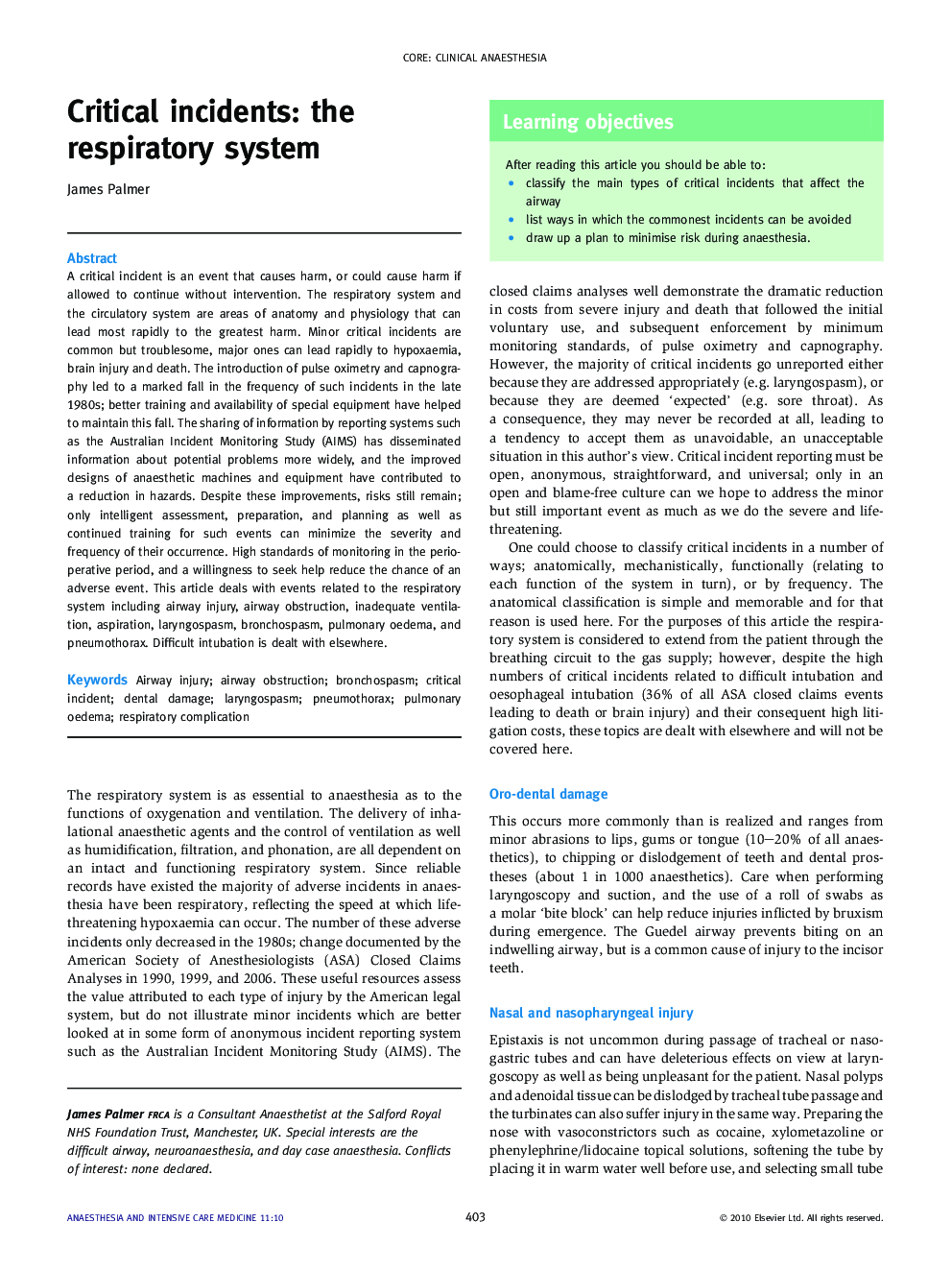| Article ID | Journal | Published Year | Pages | File Type |
|---|---|---|---|---|
| 2743241 | Anaesthesia & Intensive Care Medicine | 2010 | 4 Pages |
A critical incident is an event that causes harm, or could cause harm if allowed to continue without intervention. The respiratory system and the circulatory system are areas of anatomy and physiology that can lead most rapidly to the greatest harm. Minor critical incidents are common but troublesome, major ones can lead rapidly to hypoxaemia, brain injury and death. The introduction of pulse oximetry and capnography led to a marked fall in the frequency of such incidents in the late 1980s; better training and availability of special equipment have helped to maintain this fall. The sharing of information by reporting systems such as the Australian Incident Monitoring Study (AIMS) has disseminated information about potential problems more widely, and the improved designs of anaesthetic machines and equipment have contributed to a reduction in hazards. Despite these improvements, risks still remain; only intelligent assessment, preparation, and planning as well as continued training for such events can minimize the severity and frequency of their occurrence. High standards of monitoring in the perioperative period, and a willingness to seek help reduce the chance of an adverse event. This article deals with events related to the respiratory system including airway injury, airway obstruction, inadequate ventilation, aspiration, laryngospasm, bronchospasm, pulmonary oedema, and pneumothorax. Difficult intubation is dealt with elsewhere.
